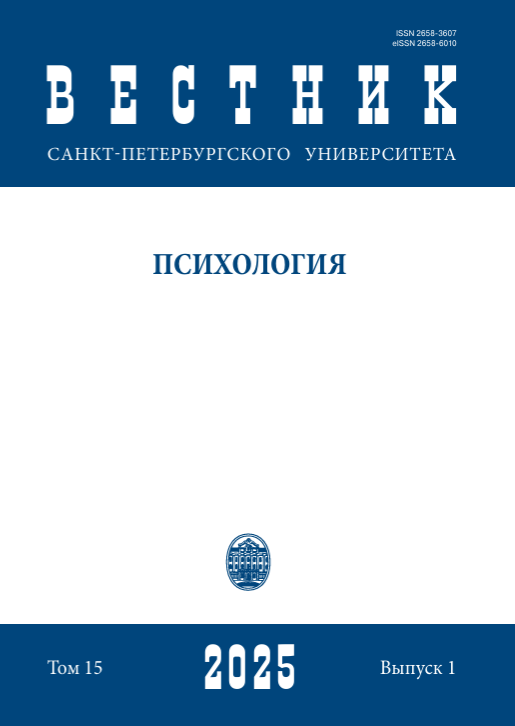Когнитивные теории восприятия времени
DOI:
https://doi.org/10.21638/spbu16.2025.103Аннотация
Проблематика восприятия времени в психологии и в когнитивной науке занимает умы ученых еще с начала прошлого века. Поначалу восприятие времени рассматривалось прежде всего как процесс физиологический, обусловленный обменом веществ и работой так называемых «биологических часов». В дальнейшем, однако, фокус рассмотрения смещался на когнитивные теории, первой из которых стала широко известная теория количества информации Р. Орнштейна. Однако если данная теория вместе с когнитивно-аттенционной теорией знакома русскоязычному научному сообществу, то ряд других, более современных моделей незаслуженно остается без внимания. Соответственно, затрудняется всяческое развитие данной области знания и возможность проведения эмпирических исследований ввиду отсутствия темы восприятия времени в отечественном психологическом дискурсе. В данной научной статье мы впервые на русском языке делаем обзор всех ключевых когнитивных теорий и моделей восприятия времени. Нами выделяется 2 группы таких теорий: теории ретроспективной и проспективной оценки. Представляются к обсуждению среди теорий ретроспективной оценки: теория количества информации, модель контекстуальных изменений, модель сегментации и совсем недавно представленная метакогнитивная модель, а среди теорий проспективной оценки – теория пейсмейкера, теория скалярного ожидания, модели осцилляторов и множественных осцилляторов, а также модель ворот внимания. В заключении нашего обзора обсуждаются различия между теоретическими положениями, лежащими в основе данных моделей, границы и условия их применимости. Также обсуждаются пути, по которым может продвигаться дальнейшее развитие области изучения механизмов восприятия времени с целью построения интегрированной теории восприятия времени, объединяющей в себе нейрофизиологические механизмы, когнитивные процессы и поведенческие проявления. Отмечается также и высокая практическая значимость исследований восприятия времени. Данная статья адресована широкому кругу читателей, но будет интересна, в первую очередь, специалистам в области когнитивной науки.
Ключевые слова:
восприятие времени, субъективное время, когнитивная психология, ретроспективная оценка времени, проспективная оценка времени, модель ворот внимания, модель контекстуальных изменений, теория скалярного ожидания
Скачивания
Библиографические ссылки
References
Загрузки
Опубликован
Как цитировать
Выпуск
Раздел
Лицензия
Статьи журнала «Вестник Санкт-Петербургского университета. Психология» находятся в открытом доступе и распространяются в соответствии с условиями Лицензионного Договора с Санкт-Петербургским государственным университетом, который бесплатно предоставляет авторам неограниченное распространение и самостоятельное архивирование.




